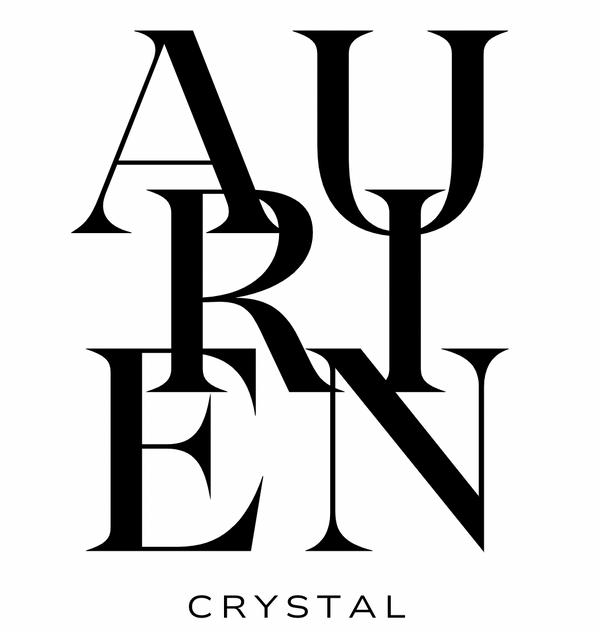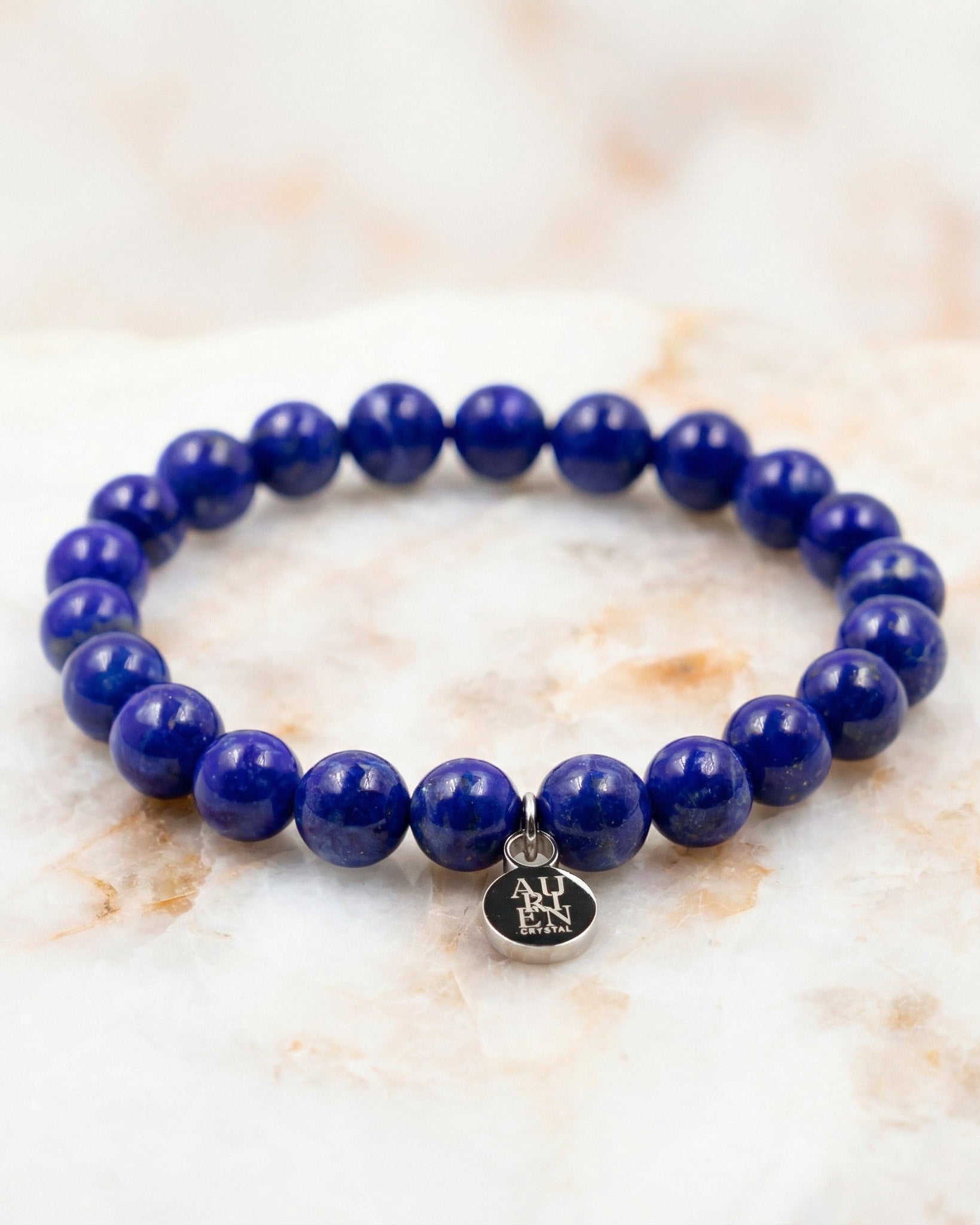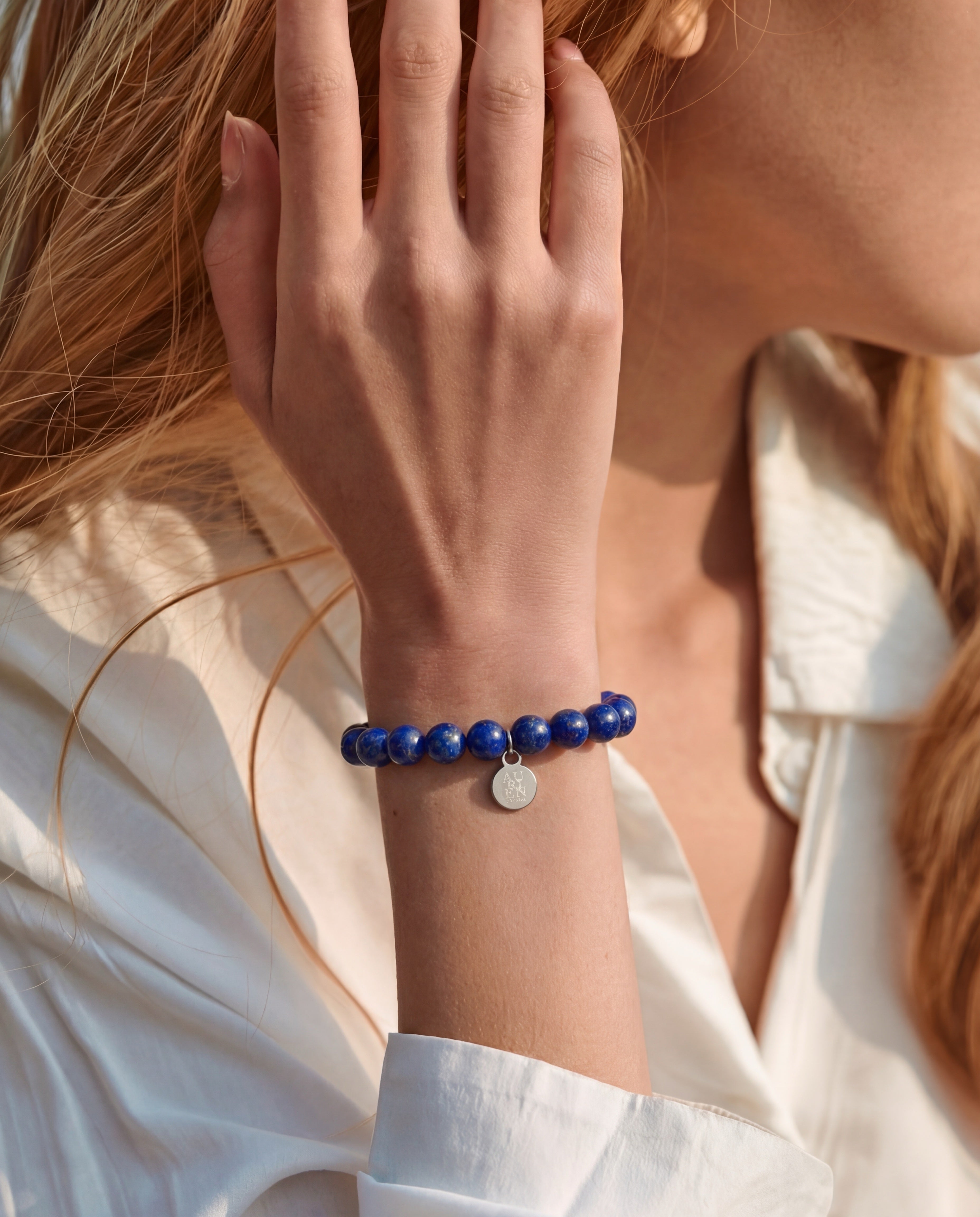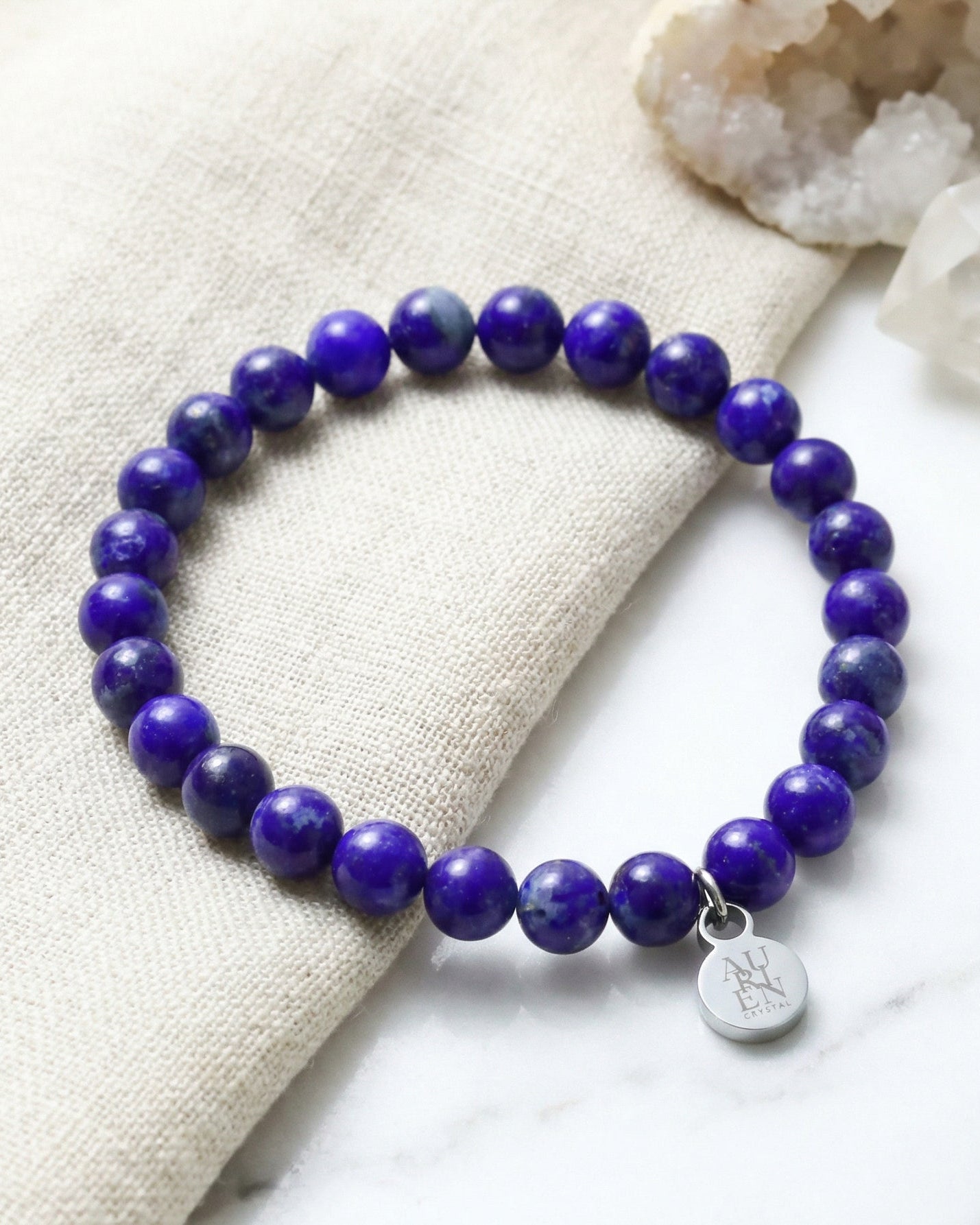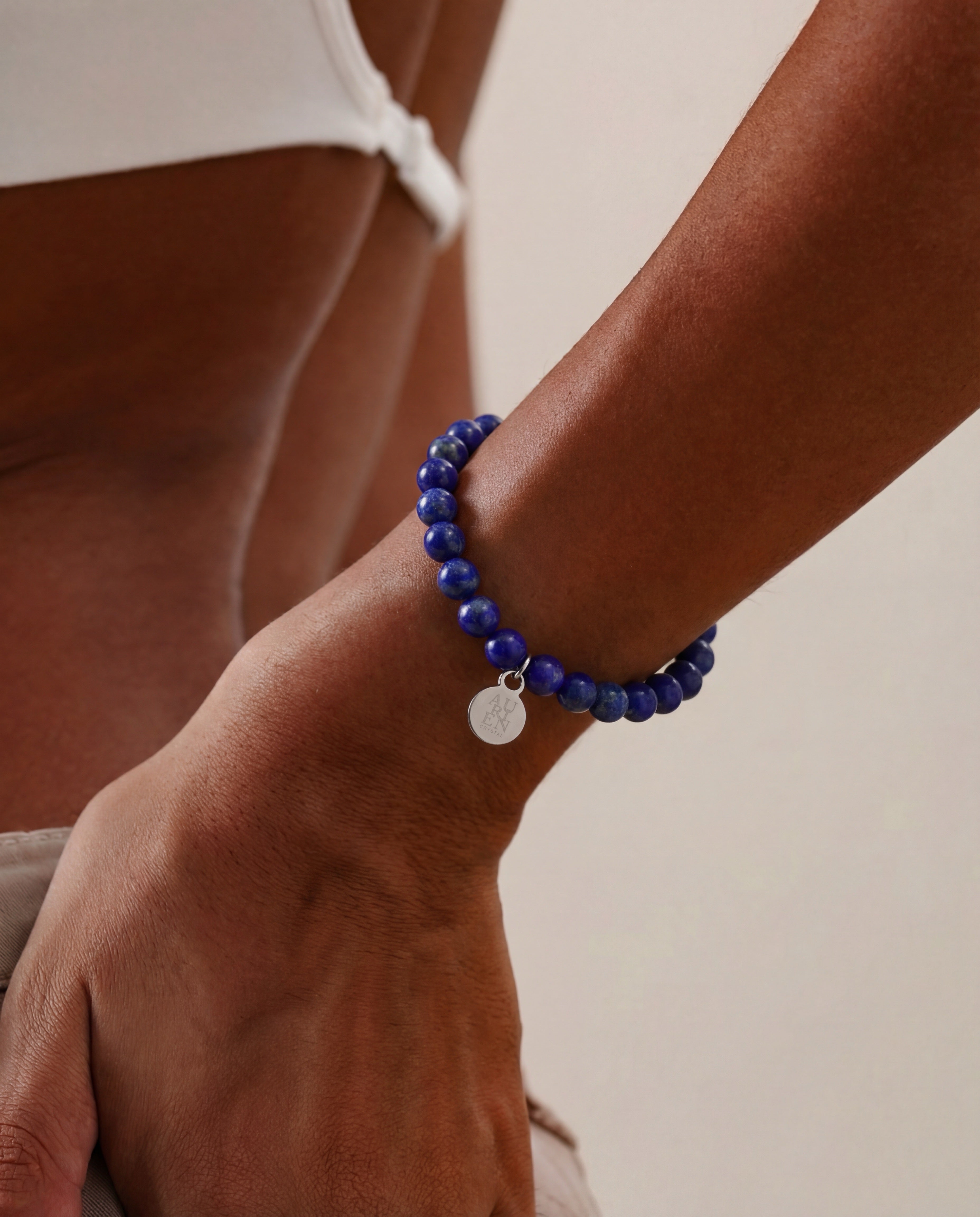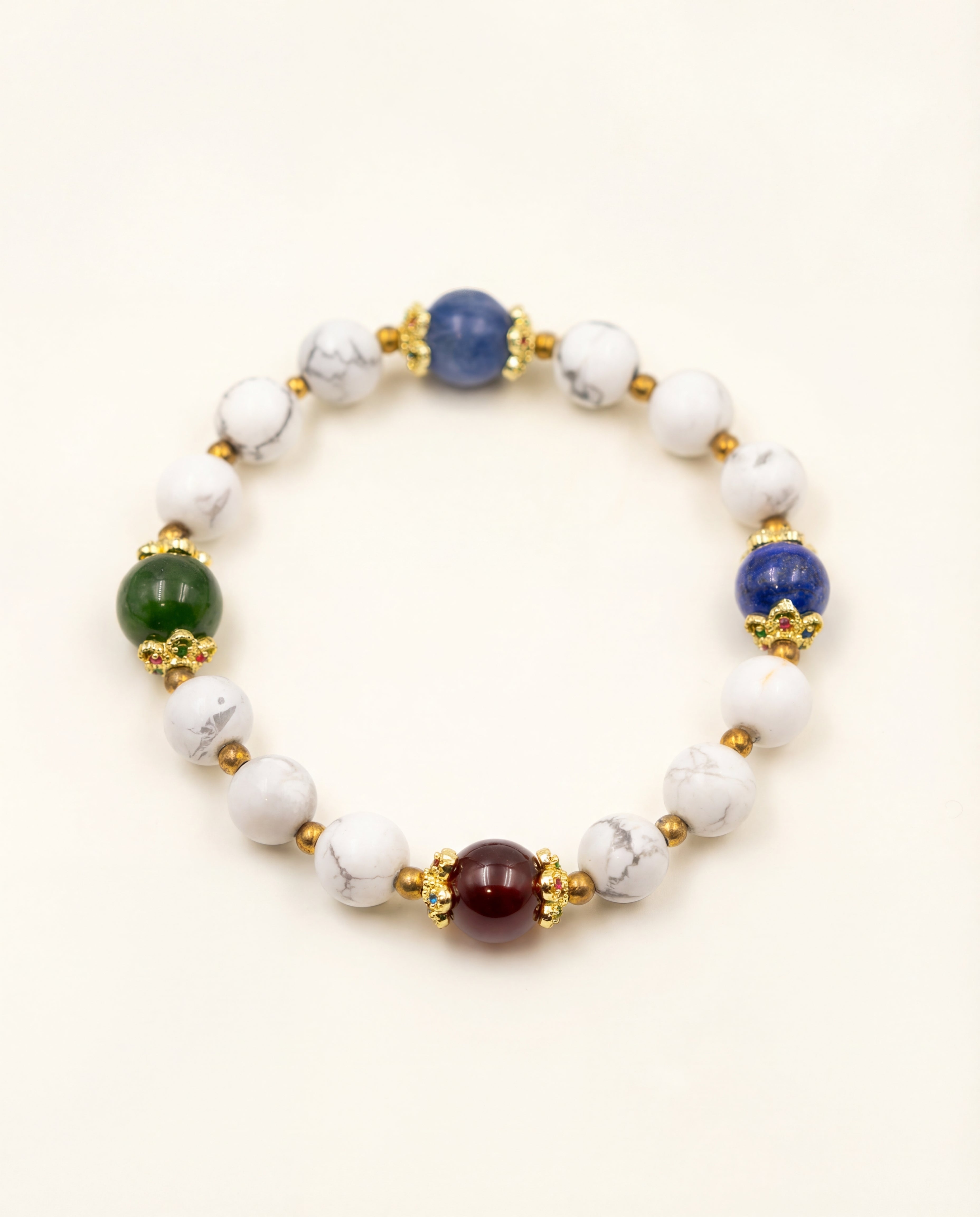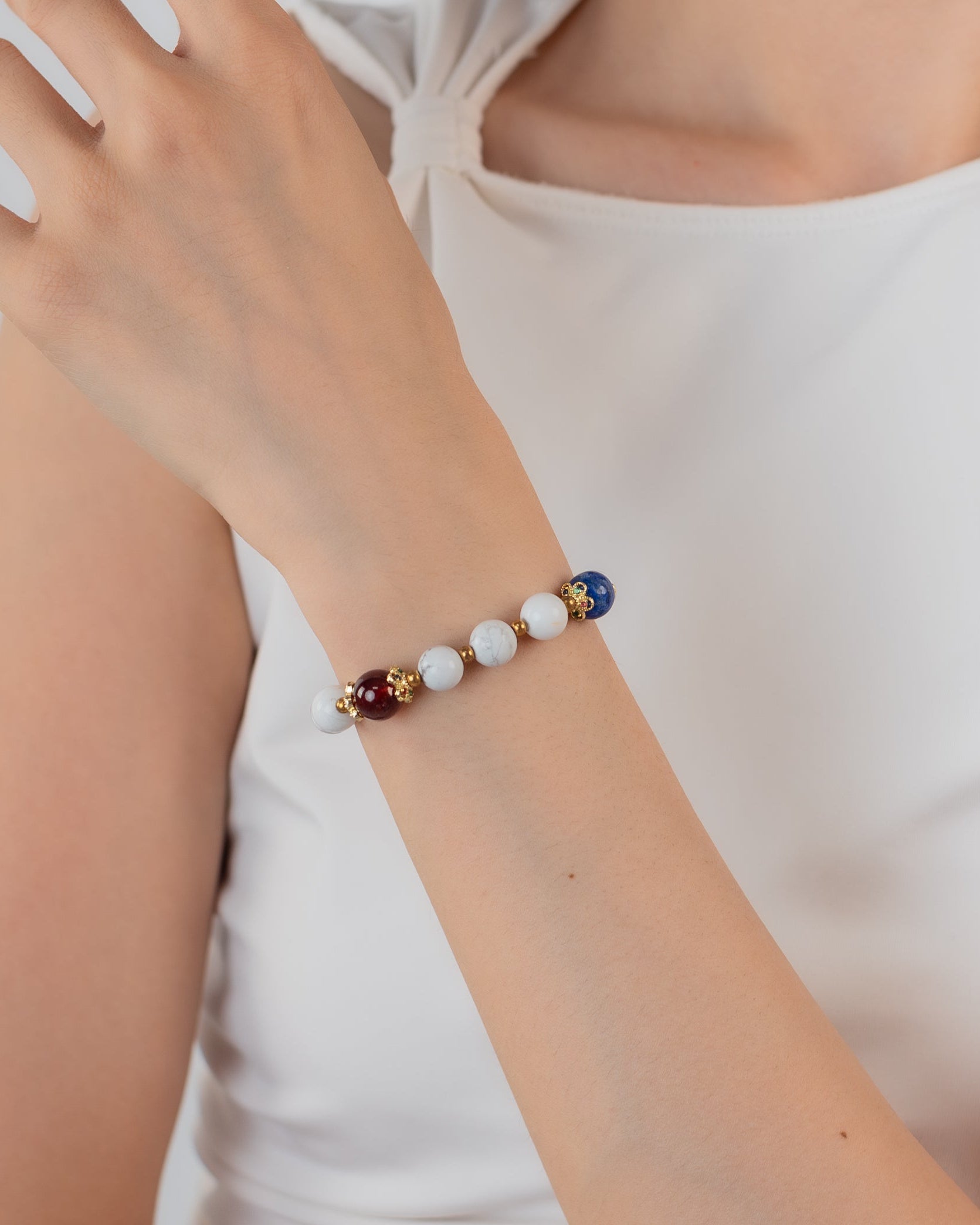Collection: Afghan Lapis Lazuli
Afghan Lapis Lazuli — FAQ
What is Afghan lapis lazuli and where does it come from?
“Afghan lapis lazuli” refers to lapis sourced from the historic Badakhshan region of northeastern Afghanistan—known for deep ultramarine blue with delicate pyrite sparkles and minimal white calcite.
How do pyrite and calcite affect the look of lapis?
Fine Afghan lapis shows even blue with subtle pyrite “stars.” Calcite appears as white streaks or clouds that lighten the stone. Many buyers prefer balanced pyrite and lower calcite for a richer tone.
What’s the difference between AAA-grade and A/B-grade Afghan lapis?
AAA typically means saturated ultramarine, tight grain, minimal calcite, and fine, even pyrite; A/B may show lighter zones, more calcite, or uneven color. Grades are trade conventions—evaluate color, uniformity, and polish.
How can I identify natural Afghan lapis vs. dyed or reconstituted material?
Natural lapis has non-uniform micro-texture, pyrite that looks metallic (not painted), and color that does not rub off. Strong chemical-blue tones, dyed calcite patches, or resin/glue lines can indicate dyed or reconstituted pieces. Ask for treatment disclosure.
Is my blue stone lapis, sodalite, or dyed howlite?
Lapis shows gold-like pyrite and can include white calcite; sodalite is navy with white veining but no metallic pyrite; dyed howlite often reveals surface dye in pores or rub-off.
Can lapis lazuli get wet? Is showering or swimming okay?
Lapis is porous (Mohs ~5–5.5) and sensitive to chemicals. Brief water contact is usually fine, but avoid prolonged soaking, chlorinated pools, and saltwater. Remove jewelry before showering, swimming, or workouts.
How do I clean lapis beads without harsh chemicals?
Wipe gently with a soft slightly damp cloth, then dry fully. Avoid ultrasonic/steam cleaners and acidic cleaners (vinegar, lemon). Store separately to reduce scratches.
What do people associate with Afghan lapis in daily practice?
Many wearers treat lapis as a symbol of clarity in communication, creative expression, and steady focus for study or journaling. It’s often chosen to encourage thoughtful speech and mindful reflection.
Which metals pair best with Afghan lapis — gold or silver?
Gold-tone highlights the warm sparkle of pyrite and deep blue; silver-tone gives a crisp, modern contrast. Both photograph beautifully in daylight.
6 mm vs 8 mm — which bead size is better for Afghan lapis bracelets?
6 mm offers a refined, stack-friendly profile; 8 mm delivers a bold single-strand look or a strong anchor in stacks. Choose by wrist size and your preferred visual weight.
How do I measure my wrist for an Afghan lapis bracelet?
Measure your wrist snug with a soft tape and add 0.2–0.4 in (≈0.5–1.0 cm) for comfort. Typical ranges: women ~6.3–6.7 in; men ~7.1–7.5 in.
How do you source Afghan lapis lazuli?
We work in small batches with partners focused on traceability and straightforward treatment disclosure, selecting material suitable for everyday jewelry.
